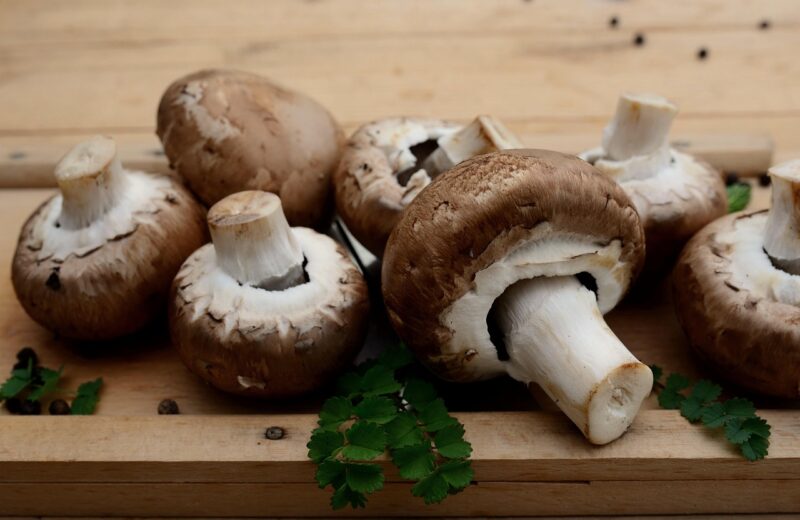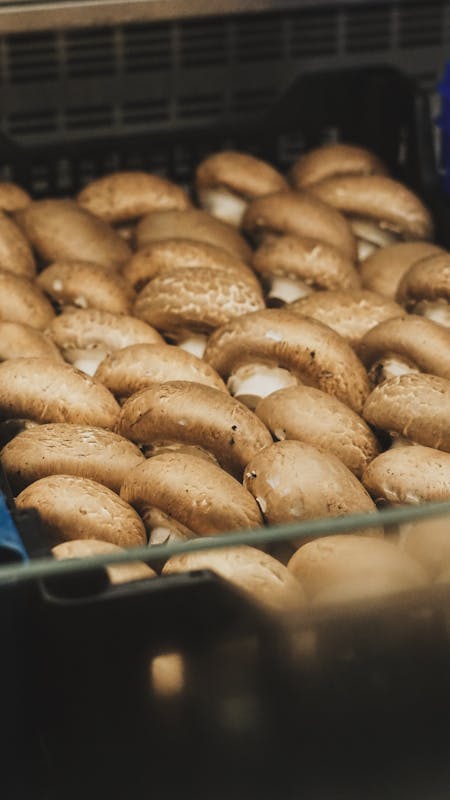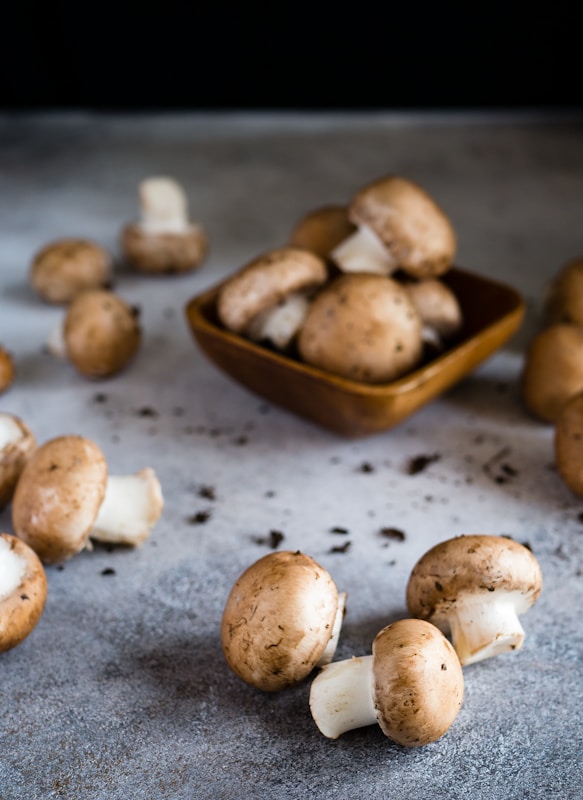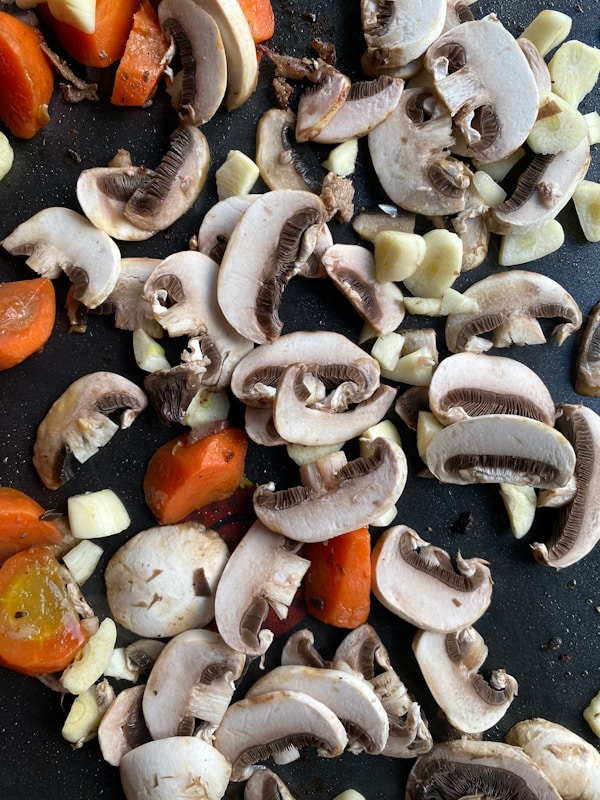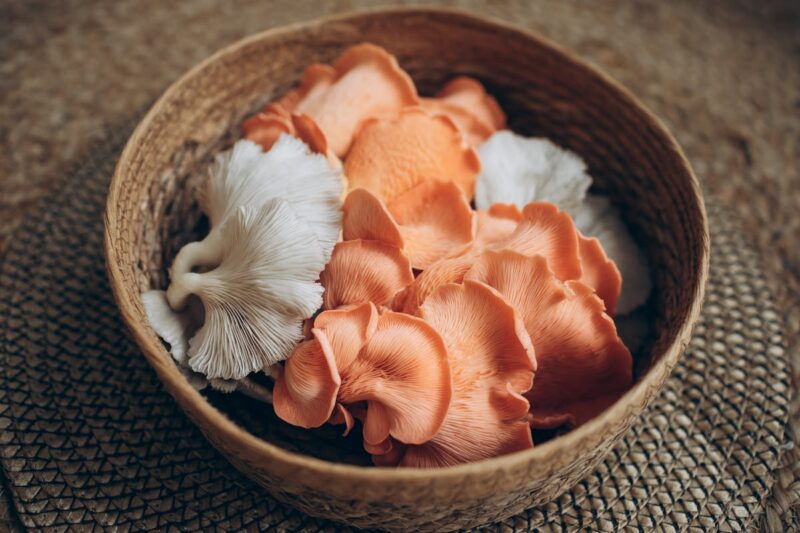In this detailed guide, we’ll explore everything you need to know about freezing mushrooms, including methods, storage tips, and how to use them once they’ve been thawed.
Can You Freeze Mushrooms?
The short answer is yes. However, the method of freezing you choose will greatly affect the quality of the mushrooms when they are thawed. Fresh mushrooms have a high water content, which can lead them to become mushy if frozen incorrectly. Here’s a step-by-step guide on how to freeze mushrooms effectively:
How to Freeze Mushrooms: Step-by-Step
Choose Fresh Mushrooms: Select mushrooms that are firm, plump, and free of blemishes. Avoid ones that are slimy or have dark spots.
Clean the Mushrooms: Gently wipe mushrooms with a damp cloth or paper towel. Avoid soaking them in water, as they can absorb moisture, affecting their texture upon freezing.
Prepping: Depending on how you plan to use the mushrooms later, you can slice them, chop them, or leave them whole. For example, slices are great for stir-fries, while whole mushrooms are perfect for stuffing.
Blanching (Optional but Recommended): Blanching helps preserve the flavor, color, and texture of mushrooms. To do this:
Boil water in a large pot.
Prepare a bowl of ice water.
Add mushrooms to the boiling water for 2-5 minutes, depending on the size.
Quickly transfer them to the ice water for the same amount of time to halt the cooking process.
Drain thoroughly.
Freezing:
Spread the mushrooms in a single layer on a baking sheet to prevent clumping.
Place the sheet in the freezer for about 1-2 hours until the mushrooms are frozen.
Transfer the mushrooms to airtight freezer bags or containers. Make sure to remove as much air as possible before sealing.
Labeling: Don’t forget to label the bags with the date and type of mushrooms. This simple step helps you keep track of what you’ve frozen and when.
Storage: Store frozen mushrooms at 0°F (-18°C) or lower. They can last for up to a year, although for the best quality, use them within six months.
Cooking with Frozen Mushrooms
When you’re ready to cook with your frozen mushrooms, there’s no need to thaw them in advance. You can throw them straight into your dish, whether it’s a sauté, soup, or casserole. This method ensures they retain moisture and flavor. However, it’s crucial to keep in mind that frozen mushrooms may have a different texture compared to their fresh counterparts. It’s often best to use them in cooked dishes rather than raw.
The Science Behind Freezing Mushrooms
Understanding the science of freezing mushrooms can enhance your approach to cooking with them. As mentioned earlier, mushrooms are composed of approximately 90% water. When they freeze, the water inside them turns to ice, creating ice crystals. The size of these crystals can significantly impact the texture of the mushrooms once thawed:
Small Ice Crystals: These form during a proper freezing process, allowing mushrooms to maintain their integrity.
Large Ice Crystals: When mushrooms are frozen too slowly, larger crystals form, leading to a loss of structure and causing them to become mushy upon thawing.
Blanching is a critical process that not only helps with flavor and color but also minimizes the formation of large ice crystals. This makes it an essential step in achieving the best results when freezing mushrooms.
Nutritional Benefits of Mushrooms
As we embrace the practice of freezing mushrooms, it’s important to recognize the nutritional benefits they bring to our diets. Mushrooms are often overlooked as a superfood, but they boast numerous health advantages, including:
Low in Calories: With very few calories, they make for a guilt-free addition to any dish.
Rich in Vitamins and Minerals: They are an excellent source of B vitamins, including riboflavin, niacin, and pantothenic acid, which help with energy production and overall metabolic health.
Antioxidants: Mushrooms contain powerful antioxidants, such as ergothioneine and selenium, which support immune function and fight oxidative stress.
High Fiber Content: They contribute to digestive health and help you feel fuller for longer.
Contain Beta-Glucans: These compounds are known to improve heart health by lowering cholesterol levels and boosting the immune system.
Freezing mushrooms allows us to preserve these nutritional benefits, making them a healthy option year-round.
Common Mistakes to Avoid When Freezing Mushrooms
While freezing mushrooms is relatively straightforward, there are pitfalls to watch out for:
Skipping Blanching: As discussed earlier, this step is crucial for preserving texture and flavor. Not blanching can lead to a mushy result.
Washing Mushrooms with Water: Soaking mushrooms can cause them to absorb water, leading to a slippery texture once frozen. A quick wipe with a damp cloth is the way to go.
Overcrowding in Storage: When mushrooms are packed too tightly in bags or containers, they can freeze unevenly. Freezing them on a baking sheet and then storing them in bags helps counteract this.
Not Using Proper Containers: Use airtight containers or bags designed for freezing to avoid freezer burn, which can diminish both quality and flavor.
Forgetting to Label: Time can fly by, and forgetting to label can lead to confusion down the track. Always jot down the type of mushroom and the freezing date.
By steering clear of these common mistakes, you’ll set yourself up for freezing success.
Thawing and Using Frozen Mushrooms
Now that you’ve frozen your mushrooms, how can you successfully incorporate them into your cooking? Here are some methods for using frozen mushrooms effectively:
Sautéing
Sautéing frozen mushrooms directly from the freezer is a popular method. The added moisture from the ice can help create a nice sauté. Heat a little oil or butter in a pan over medium heat, add the frozen mushrooms, and let them cook down until they’re tender. For a flavorful boost, add garlic, herbs, or your choice of seasoning.
Adding to Soups and Stews
Frozen mushrooms can be added directly to soups and stews, infusing them with flavor as they warm up. There’s no need to thaw beforehand; just toss them in alongside your other ingredients and let them simmer to soften and release their delightful flavors.
Baking
Incorporate frozen mushrooms into spanakopita, quiches, or casseroles. They can be added directly to the dish without the need for defrosting. Just make sure to account for the extra moisture they release when baking.
Stir-frying
Like sautéing, stir-frying is a great way to use frozen mushrooms. Since you’re cooking with high heat, the moisture cooks off quickly, helping to retain the mushroom’s flavor.
Sauces
Frozen mushrooms can elevate sauces for pasta or meats beautifully. Start by sautéing them to release their moisture, then build your sauce around them for added depth.
Understanding Mushrooms: Varieties and Varieties
Before discussing freezing methods, let’s take a moment to appreciate the wide world of mushrooms. From the mild flavor of button mushrooms to the rich and meaty portobellos, each type adds a unique twist to meals. Here are some common varieties:
Button Mushrooms: The most common type. They have a subtle flavor and are excellent in salads, stir-fries, and soups.
Cremini Mushrooms: Also known as baby bellas, these are slightly more mature than button mushrooms and have a richer flavor.
Portobello Mushrooms: Known for their large size and meaty texture, they are often grilled or used as burger substitutes.
Shiitake Mushrooms: These have a distinctive, earthy flavor and are a staple in Asian cuisine.
Oyster Mushrooms: With a delicate and slightly sweet flavor, these mushrooms are often sautéed or used in stir-fries.
Familiarizing yourself with these varieties will not only enhance your cooking repertoire but will also guide you in deciding which mushrooms are worth freezing based on their intended use.
Creative Culinary Uses for Frozen Mushrooms
Using frozen mushrooms in a creative way can sparkle up your weeknight meals. Here are a few unique ideas you may want to try:
Mushroom Risotto: Incorporate frozen mushrooms into your risotto for a rich and creamy dish. Simply add them while cooking the rice, allowing the flavors to blend seamlessly.
Stuffed Peppers: Combine frozen mushrooms with other vegetables, grains, and proteins to create a hearty filling for stuffed peppers.
Mushroom Pizza: Frozen mushrooms can act as a topping on your homemade pizza. Just sprinkle some directly on the pie before baking for added flavor.
Mushroom Burgers: Blend thawed mushrooms with black beans, brown rice, and spices for a delicious vegetarian burger patty.
Mushroom Gravy: Sauté frozen mushrooms until golden and use them as the base for a rich mushroom gravy to serve over mashed potatoes or rice.
These ideas are just the tip of the iceberg when it comes to using frozen mushrooms. Feel free to experiment and incorporate them into your favorite dishes.
Conclusion: Embracing the Freezing Method
Learning how to freeze mushrooms opens up a world of culinary possibilities. It allows you to take advantage of seasonal bounty without fear of waste. By following best practices for preparation, freezing, and cooking, you ensure that every dish benefits from the delightful taste and texture of mushrooms, regardless of the time of year.



